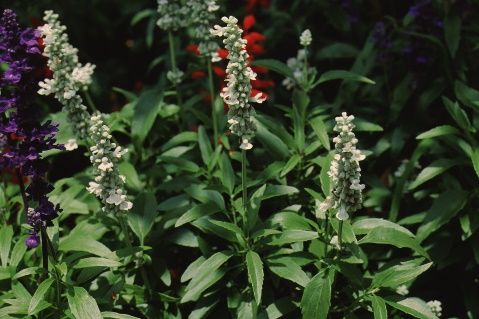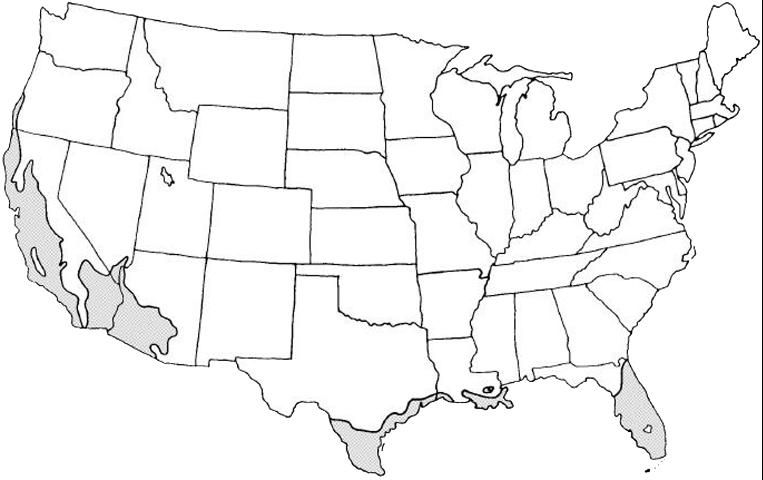Introduction
This cultivar of blue salvia, native to the southwestern United States, adds a soft white color to any sunny landscape. Plants grow to about 2 feet tall and will spread with a tight head to about 2 feet. Flower spikes are held well above the dense, grey/green foliage, displaying the striking white color nicely. Plants are very uniform, providing a nice, solid structure to any landscape planting.

Credit: Edward F. Gilman, UF/IFAS

Credit: Edward F. Gilman, UF/IFAS
General Information
Scientific name: Salvia farinacea 'Victoria White'
Pronunciation: SAL-vee-uh fair-rin-NAY-see-uh
Common name(s): 'Victoria White' sage, 'Victoria White' salvia
Family: Labiatae
Plant type: perennial; herbaceous
USDA hardiness zones: 9 through 11 (Figure 3)
Planting month for zone 9: Mar; Sep; Nov; Dec
Planting month for zone 10 and 11: Feb; Mar; Oct; Nov
Origin: native to North America
Invasive potential: not known to be invasive
Uses: border; cut flowers; attracts butterflies; attracts hummingbirds
Availability: generally available in many areas within its hardiness range

Credit:
Description
Height: 2 to 3 feet
Spread: 1 to 3 feet
Plant habit: upright
Plant density: moderate
Growth rate: fast
Texture: medium
Foliage
Leaf arrangement: whorled
Leaf type: simple
Leaf margin: serrate
Leaf shape: ovate
Leaf venation: not applicable
Leaf type and persistence: semi-evergreen
Leaf blade length: 2 to 4 inches
Leaf color: green
Fall color: not applicable
Fall characteristic: not applicable
Flower
Flower color: white
Flower characteristic: summer flowering; fall flowering
Fruit
Fruit shape: no fruit
Fruit length: no fruit
Fruit cover: no fruit
Fruit color: not applicable
Fruit characteristic: inconspicuous and not showy
Trunk and Branches
Trunk/bark/branches: not applicable
Current year stem/twig color: green
Current year stem/twig thickness: thin
Culture
Light requirement: plant grows in full sun
Soil tolerances: acidic; sand; loam; clay
Drought tolerance: moderate
Soil salt tolerances: unknown
Plant spacing: 6 to 12 inches
Other
Roots: not applicable
Winter interest: not applicable
Outstanding plant: not particularly outstanding
Pest resistance: long-term health usually not affected by pests
Use and Management
Space plants about 12 inches apart to quickly form a solid mass of purple color. Set a mass planting of salvia in front of a dark green background of foliage from a dense shrub for maximum effect. Salvia also looks nice planted in a perennial border mixed with other perennials and grasses. It is also suited for planting in a container and displaying on a deck or patio.
Pests and Diseases
Aphids suck plant juices and may coat the leaves with sticky honeydew.
Powdery mildew may coat the leaves with a white powdery growth.